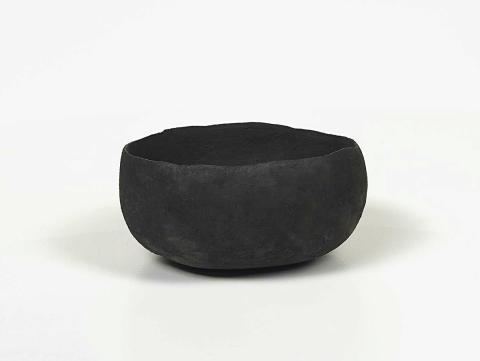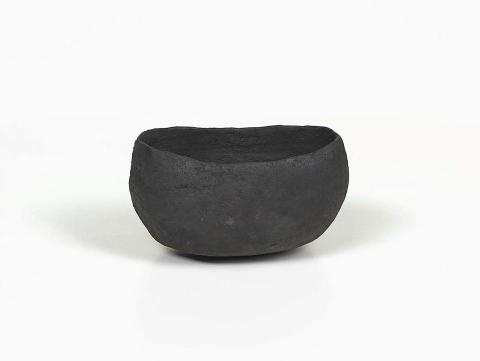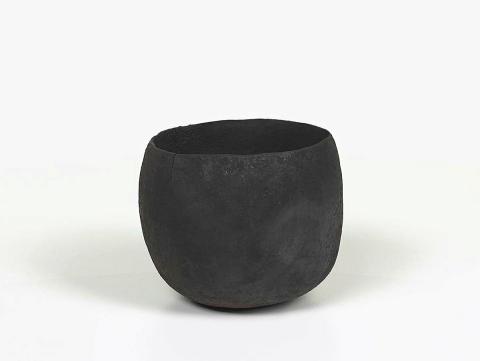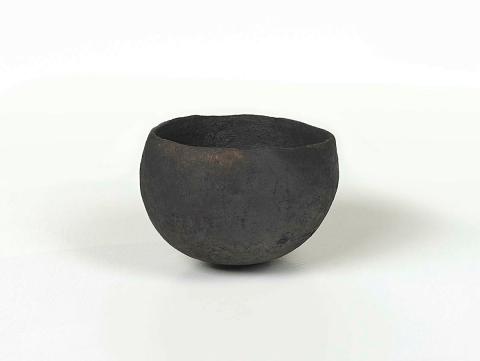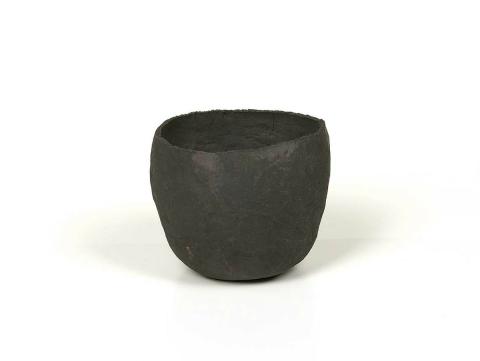EXPANDED LABEL: Sereke Pua (clay pot) / TEQAE
By Ruth McDougall
‘sis’ August 2023
Imelda Vaevavini Teqae creates pots that are blackened using dried coconut leaves during pit-firing. Known as sereke pua, they are produced in a variety of shapes and sizes suited to the tasks of cooking and storing food. After moving to her husband’s village as a young woman, Teqae developed the patience and skills required to shape clay slowly by hand, using a wooden paddle and river stones to smooth the surface. Without a daughter of her own and close to her nephew Walter, Teqae’s new Aunt Emma handed down her own knowledge and passion for working with clay to his young bride.
Perhaps because this knowledge was not her cultural birthright, Teqae is careful with the details she shares about creating her pots. Her works are always made from Chirovanga earth and local black sand, and she will only fire the pots as her Aunt instructed, in a fire fuelled by coconut husks and wood that ‘cook’ and harden the pots perfectly.
While Teqae’s modes of preparation and firing adhere to cultural protocols, the forms she creates are open to experimentation. In addition to creating elegant, open-mouthed vessels used for cooking, Teqae has begun to make non-utilitarian forms, including small sculptures of canoes, the vessels being a mainstay of women’s life in Chirovanga.
Signifying connections to land and ancestral knowledge, Imelda Vaevavini Teqae's works are important receptacles of memory and a potent symbol of hope for future generations.
